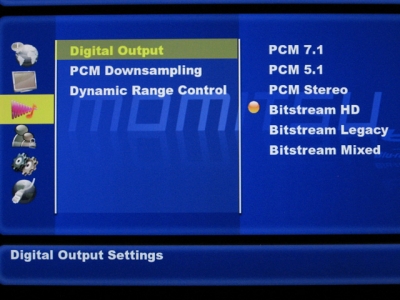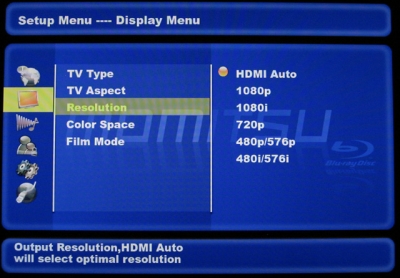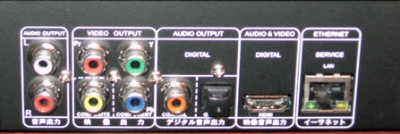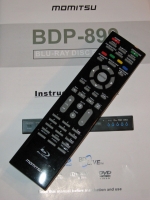What Region is this?
From the very early days of the now distant format war between HD DVD and Blu-ray, supporters of BD knew that there was only one clear advantage that the former had over the latter and that was the lack of region coding. The BDA (Blu-ray Disc Association) adopted region coding for the Blu-ray format that, though less stringent and more intuitive than its DVD predecessor, was and is still a nuisance for collectors in the United States who like to import a lot of titles that often never make their way over here, or, conversely, for those folks in Europe, Australia and New Zealand who like to import their titles from the States because they either come out here earlier or can be had at far cheaper prices, even with shipping and taxes factored in.
Instead of DVD’s unnecessarily convoluted region coding scheme, the BDA split up Blu-ray into three simple regions, A, B, and C, with Region A encompassing East Asia (with the exception of Mainland China and Mongolia), Southeast Asia, The Americas and their dependencies; Region B covering Africa, Southwest Asia, Europe (excluding Russia) Oceania, and dependencies, and Region C covering all other territories.
It is possible, however, to find Blu-ray titles that are region-free, as most titles from Warner are and most catalogue titles from Sony and other studios. As anyone who has tried to import titles can attest to, however, coming by proper region coding information on Blu-ray releases can be an arduous task. Many titles do not state what region they are coded for on the packaging at all while some are mislabeled.
Making matters worse, the BDA has strict rules against its licensees making Blu-ray players region-free enabled for either Blu-ray or DVD playback. Recently, the BDA barred Oppo — a company that built its reputation on providing full-featured, region-free capable DVD players at an affordable price — from putting region-free DVD playback capability in their forthcoming BDP-83 universal Blu-ray player, and Blu-ray region-free playback is strictly prohibited by BDA licensing.
So, rather surprisingly, in steps Japanese manufacturer Momitsu, who made a name for themselves some years back for making some pretty good upscaling DVD players, but they are hardly a household name here in the United States; they definitely qualify as an off brand. Perhaps it is because they operate outside of the U.S. or because they really only cater to the Asian market (the player on screen display comes with the default language as Japanese), but they have somehow managed to fly under the radar of the BDA and produce the world’s first region-free Blu-ray Disc player, the BDP-899.

Styling
When I first received the BDP-899 I didn’t know what to expect, having never had any previous experience with Momitsu. Unpacking the unit from its briefcase-style box, I was surprised that the unit was heavier and more solid in build than I was expecting it to be, weighing in at a total of 7.5 pounds (3.4 kilograms). First impressions are that it looks and feels more solidly constructed than my Oppo 980H DVD player.
The BDP-899’s body is a shiny, gunmetal black that looks sleek. The faceplate is also black, with the “Power” button on the far-left front. The front-loading disc tray resides to the immediate right of the power button and to the right of that is a big Blu-ray Disc logo that lights up a bright neon blue when the unit is powered on and stays this way during playback.
The front panel also houses the “Display” window which shows elapsed time status in addition to disc type, output resolution and output connection status indicators that are far too small to read from any reasonable distance.
The standard function buttons (“Open/Close,” “Play/Pause”, “Stop”, “PREV,” “NEXT”) as well as a “Standby” indicator LED are also right on the front at the far right. Right above the “Open/Close” and “Play/Pause” buttons on the front panel is also where you’ll find the USB port for use with a USB flash drive for BD-Live functionality and playback of multimedia files (MPEG-4, WMA, MP3, JPEG).
Thee function buttons also have the unfortunate feature of lighting up in the same bright, neon blue color as the power indicator Blu-ray Logo, and like the logo, this feature can neither be turned off nor dimmed.
The rear panel of the BDP-899 is, naturally, where you will find all your connectivity options. The 899 features one 2-ch analogue output, one composite video out, one component video out, one coaxial digital and one optical digital out, an HDMI out and an Ethernet port. The connections are all placed pretty close together on the rear and could have used better spacing.
The player’s remote control comes with all the functions you’ll need to operate the unit successfully and the buttons are well laid out, but it feels very light and flimsy. The lack of any back lighting also makes it nearly impossible to navigate in a dark home theatre.
Overall, the Momitsu feels solid, which assuages some fears about its longevity, but its design is rather clunky, in a Tonka truck sort of fashion, and the bright lights on the front can become a nuisance during playback to those who don’t have the player hidden away. It is also rather loud whilst loading discs, like, immersion blender loud. It certainly ranks as one of the loudest Blu-ray players I have had in my possession, going all the way back to the first-generation Panasonic DMP-BD10.
Features and Setup
The Momitsu BDP-899 features an impressive array of features for a player at its price point ($349.95 at HKFlix). It will decode and bitstream all of the advanced and legacy codecs over HDMI (Dolby Digital, DTS, Dolby Digital Plus, Dolby TrueHD, DTS-HD High Resolution, DTS-HD Master Audio) up to 7.1 channels, or it will decode all of the codecs over its 2-channel analogue RCA outputs.
The BDP-899 is also a full-profile, 2.0 player, meaning it has all of the bells and whistles of the Blu-ray format including BonusView (Profie 1.1) picture-in-picture and secondary audio and BD-Live (Profile 2.0) networking features.
Setting up the BDP-899 to work with my system was quite simple. The player comes with the OSD (On Screen Display) language set to Japanese, so the first thing that needs to be done is to switch the language to English — unless, of course, you actually read Japanese. Fortunately, the manual explains how to do this, but if you want a shortcut still, the sheet included in the box from HKFlix gives the following button sequence to change it: with the player in “Stop” press setup, right, down, down, down, right, enter.
From there, I went into the “TV Aspect” menu and set it to “16:9” then down to the “Resolution” menu and set it to “HDMI Auto.” Other available output resolutions are 1080p, 1080i, 720p, 480p/576p, and 480i/576i. I set the “Color Space” to “xvYCC” and in the “Film Mode” menu I set it to “On,” this enables 24p playback from BDs.
I then went into the “Audio” menu and set it to “Bitstream HD” to bitstream all the codecs for decoding in my AVR. For those who want the BDP-899 to decode everything and send as PCM via HDMI, then the player would need to be set to either “PCM Stereo,” “PCM 5.1CH,” or “PCM 7.1CH.” There are also “PCM Downsampling” and “Dynamic Range Control” options for those who need to set those based on their systems.

There is a “Parental Controls” menu as well, which allows parents to set ratings limits on discs; since I don’t have any kids, I left everything at the highest settings.
The player also automatically recognized my network settings, so there was no need to make any adjustments in the “Network” menu, but there settings can be made, if necessary, to switch between Dynamic and Manual IP assignment, etc.
And now for the star attraction: the Momitsu BDP-899 features region-free playback, PAL output, NTSC output, PAL-to-NTSC conversion capabilities an, presumably, NTSC-to-PAL conversion capabilities, which I obviously could not test. Region-free playback is accomplished by using a simple remote control code while no disc is in the player and the disc tray is closed. Unfortunately, that is the only way to accomplish the region changing and, for Blu-rays, the region code must be entered each time you wish to change the region for the player. It cannot be made permanently region-free. DVD region-free playback is a different matter. The DVD playback can either be set to a specific region, or it can be set to region “0”, which makes the player region-free for DVD playback permanently.
There are different combinations that can be used, and HKFlix, currently the only known retailer selling the unit in the US, includes a sheet in the box with the codes you will need to change the regions.
The code works as such: 9735XY, with X being the region you want for DVD (0-6) and Y the region for BD (1-3), where 1-3 correspond to A-B. So:
- 973501 — Sets the unit to Region Free for DVDs and Region A for Blu-ray.
- 973502 — Sets the unit to Region Free for DVDs and Region B for Blu-ray.
I confirmed the player’s region-free status by playing the Region A coded Blu-ray Discs, Wall•E, Pirates of the Caribbean: The Curse of the Black Pearl, and the region-free French Blu-ray release of Dune and then switching the region and playing BFI’s Region B coded Blu-ray releases, The Loneliness of the Long Distance Runner and Saturday Night and Sunday Morning. All of the discs played back without any issues.
Since I don’t have any PAL encoded films on DVD, I could only test the player’s PAL-to-NTSC capability using three Region 2 PAL DVDs from some SACD+DVD releases that I own: Goldfraap’s Supernature and Depeche Mode’s Some Great Reward and Playing the Angel releases, plus the PAL supplements on the French release of Dune. In each case the BDP-899 played back the PAL content without issue and did the conversion better than my Denon DVD-2200 universal DVD player did.
And Another Thing: Source Direct Mode, Sort Of
Momitsu’s BDP-899 Blu-ray player also has a semi-source direct mode. When the unit is set to “HDMI Auto” and “Film Mode” is set to “On,” the player will output 1080i material at 1080i/60 and 1080p/24 material at 1080p/24. It will not, however, output DVDs at their native 480i. In this mode DVDs will still be upscaled, but only to 1080i/60. It is also important to note that PAL-to-NTSC conversion will not work if the player is set to “HDMI Auto.” There was also some talk about this player being able to upscale DVDs to 1080p/24, but I have not been able to confirm that. As far as I can tell, the player can only scale DVDs to a maximum resolution of 1080p/60.

Startup Times
Sadly, the Momitsu suffers from an issue plaguing most BD players that, 3-years after the format’s launch, still doesn’t want to go away — sluggish disc loading times. Here are some disc loading times for the BDP-899:
- Wall•E: 90 seconds to reach opening trailer; 8 seconds to reach home menu.
- Pirates of the Carribean: The Curse of the Black Pearl: 50 seconds to Disney splash screen; additional 90 seconds to get through trailers to the main menu
- The Beauty of Snakes — 63 seconds to menu.
One redeeming factor for the BDP-899 is it will automatically play a disc at power on if one is loaded in the player — this is something that my Sony BDP-S350 would not do.
HD Performance
So, the Momitsu is the Holy Grail, so to speak, for collectors all over the world; a Blu-ray player that can finally playback BDs and DVDs from all regions, playback multimedia files from USB flash drives (or USB hard disc drives, according to the manual), and do PAL-to-NTSC conversion, but how is the player’s performance?
I ran the Silicon Optix HD HQV Benchmark tests on the player to see exactly how well a performer the Momitsu is on HD playback. First up was the Video Resolution Loss Test which tests how well the unit de-interlaces 1080i material into 1080p. Here the Momitsu failed, showing obvious strobing in the test pattern, which means the Momitsu only passes 540 lines of resolution when de-interlacing 1080i. This makes it even more beneficial that the player allows for the automatic passing of native 1080i source material, allowing users to use their displays (assuming they de-interlace properly) or outboard scalers to handle the de-interlacing without having to go digging through the player’s menus and switching the output resolution whenever coming across a 1080i title.
Next up were the Video Reconstruction tests which test the video processor’s diagonal filtering capabilities. Poor diagonal filtering can result in what are commonly refered to as motion “jaggies.”
In the first “jaggies” test is a pattern of three white bars in a waving motion. The 899 did not fare well on this test either, as all three bars showed some obvious stair-stepping edges, with the bottom bar being the worst offender. The second “jaggies” test is a rotating white bar in a circle. Here, the Momitsu failed again, starting to show some “jaggies” in the red zone at around the 25-degree mark.
Last up was a Film Resolution Loss Test, which tests the player’s 2:3 inverse telecine capabilities or, in other words, how well the player handles the conversion of material that was recorded at 24Fps and converted to 1080i/60 back to 1080p. Here the player had its strongest results in the HD test suite. The first part of the test involves a SMPTE test pattern recorded at 1080p/24 and converted to 1080i/60 broadcast standard, and the player locked in quickly, after initially showing some slight strobing, and did the conversion to 1080p/60 perfectly.
The second part of the test shows a race car speeding past an empty grandstand. Again, after some initial moiré in the background grandstand, the player locked in quickly and rendered the scene without issue and with a fine amount of detail.
Test patterns are one thing, but how did the player do in real world high definition playback? Well, I tested the player against a Panasonic DMP-BD80 using Wall•E and Planet Earth and the differences were less earth shattering than I was expecting them to be given the results from the HQV Benchmarks.
Planet Earth (1080p/24), “From Pole to Pole,” Chapter 3, with the Cherry Blossoms blooming in Japan and the change over from spring to autumn: the Momitsu showed little difference at first in quality from the BD80, but the Panny’s colors looked more natural and a little less cartoonish. The Panasonic maybe had slightly sharper detail than the Momitsu.
On Wall•E (1080p/24; AVC/MPEG-4), Chapter 14, “Welcome to the Axiom”: the colors popped on the Momitsu for sure, but even the less subdued color palette couldn’t take away from the obviously more clean and detailed look of the Panasonic BD80 here; still the Momitsu is no slouch and will be acceptable for most.
SD Playback
A lot of people still have huge DVD libraries and this player’s region-free capabilities and PAL and NTSC features mean that many will be wondering how well it does on DVD playback in addition to BD. Have no fear, the Momitsu may be a better DVD player than it is a Blu-ray player.
Running the Silicon Optix SD HQV Benchmarks revealed a DVD player that can stand against the very best there are out there and hold its own, without a doubt.
First up were the “jaggies” tests where, unlike in the HD tests, the BDP-899 passed with flying colors on both test patterns, showing no jaggies on either test, even a third “jaggies” test that shows a flag waving in the breeze showed no signs of any motion jaggies and also displayed good detail in the brick building in the background.
The second test was the 3:2 Detection test, which the BDP-899 also passed effortlessly. After briefly displaying some moiré in the stands of an empty football field, the player quickly locks in to the 3:2 cadence and shows a stable and detailed image.
The next set of tests all test how well the player handles assorted and mixed cadences, such as DVCAM, and Mixed 3:2 Film with Added Video Titles, etc. In each of these tests, the player also passed, showing no artifacts such as stair-stepping, and in the 3:2 with Video Titles, the text was clear and scrolled smoothly.
In real world SD playback, I went to Star Wars: Episode III — Revenge of the Sith’s Chapter 40, “Battle of the Heroes” and once again compared the player’s playback to the Panasonic DMP-BD80. On this front, they were both equals, as far as I could tell. There were some slight motion jaggies on the columns in the background in the room where Anakin and Obi-Wan fight that is most likely due to the source, but with both players scaling to 1080p, I could see no significant difference in picture quality.
The Good:
- Region-Free Playback of Blu-ray and DVD Discs
- PAL-to-NTSC Conversion
- Strong DVD playback
- Full-Profile Blu-ray support
- Decoding and bitstreaming of all the audio codecs
- Source Direct for Blu-ray playback.
The Bad:
- Poor 1080i de-interlacing
- Only average HD playback
- Ugly styling
- Limited purchasing availability
- Cheap feeling remote
- Sluggish disc loading
- No Source Direct for DVD playback
The Scorecard:
Design:
Performance:
Value:
Overall:
The Definitive Word
Despite some obvious flaws, there is no denying that this player will definitely have a market amongst hardcore cinephiles. The Momitsu BDP-899, now fills the need for a Blu-ray player that is region-free and thus allows for the headache-free purchasing of discs no matter where they may come from, even if the extras are encoded in PAL. Its HD playback may not be up to the same level as some of the better players available on the market today, but despite its benchmark scores, it is more than acceptable in real world playback and worth the $350 price tag for the features it provides.
The Momitsu BDP-899 Region-Free Blu-ray Disc Player can currently be purchased at HKFlix for $349.95 + Shipping and Handling.







I must admit to having a full multiregion Panasonic DMP-BD60 which plays Blu-Ray and DVD’s from all regions. It works perfectly and the picture quality is stunningly good. the upscaling of ordinary DVD’s is also exceptionally good. I bought mine here:
http://www.stegen.com/index.php?cPath=61&sort=2a&language=en&osCsid=e9a729b96d16f40938
I’m certain the Panasonic is a far superior player, based on the playback of the BD80, but that is an aftermarket mod and far more costly than this Momitsu, which will be adequate for most people.
You pointed out that the player does a poor job deinterlacing 1080i, but never did an A/B comparison with the Panasonic to see if it makes a difference with real-world material. Have you, since the original review, watched any 1080i content that you can comment about. I know as far as region A is concerned, 1080i content is mostly just concert videos and quite rare. But, region B has some locked blu rays that are on the disc as 1080i50. One example off the top of my head is Zatoichi and some others are here:
http://www.avforums.com/forums/blu-ray-movies-tv-programmes/858687-there-any-1080i-50hz-blu-ray-discs.html
In order for the player to do PAL conversion, it can’t be set to “HDMI Auto”. So the player will be doing the deinterlacing after the PAL conversion and apparently it doesn’t do a good job.
There is a big difference in real-world playback when a player fails to de-interlace 1080i properly, so much so that a side-by-side comparison is unnecessary. When a player fails the HQV HD Resloution Loss Test (de-interlacing) it means that it is only passing half the lines of resolution (540) when de-interlacing 1080i content. The Momitsu is not the only player that fails on that regard either — Sony’s S350 and S550 Blu-ray players also de-interlace 1080i improperly BD-P1500 and BD-P2500 are two more players that improperly de-interlace 1080i content, passing only 540 lines of resolution.
So for a PAL disc you would want to set the player to output 1080i to make sure that it will do the PAL conversion and not pass only half the lines of resolution? This is assuming that the display for receiver does a good job upconverting 1080i. For all other material just set the player to “HDMI Auto” and “Film Mode – On”. This will get the best picture in all situations?
Yes, exactly. But, like you said, if your display or outboard processor doesn’t do correct 1080i de-interlacing, then you’re out of luck either way. With the Momitsu, as long as you set it to a specific output resolution and don’t set it to “HDMI Auto,” then it will do the PAL-to-NTSC conversion. :)
I’ve been using this mostly with Region 5 DVD’s and once I figured out that you couldn’t use HDMI-auto, it’s been great. Anyone know whether assigning the player an IP and giving it internet access for updates will risk losing region-free status?
I’ve had the player connected to the Internet and it does not affect the region-free status, although I use DHCP to assign the IP. :)